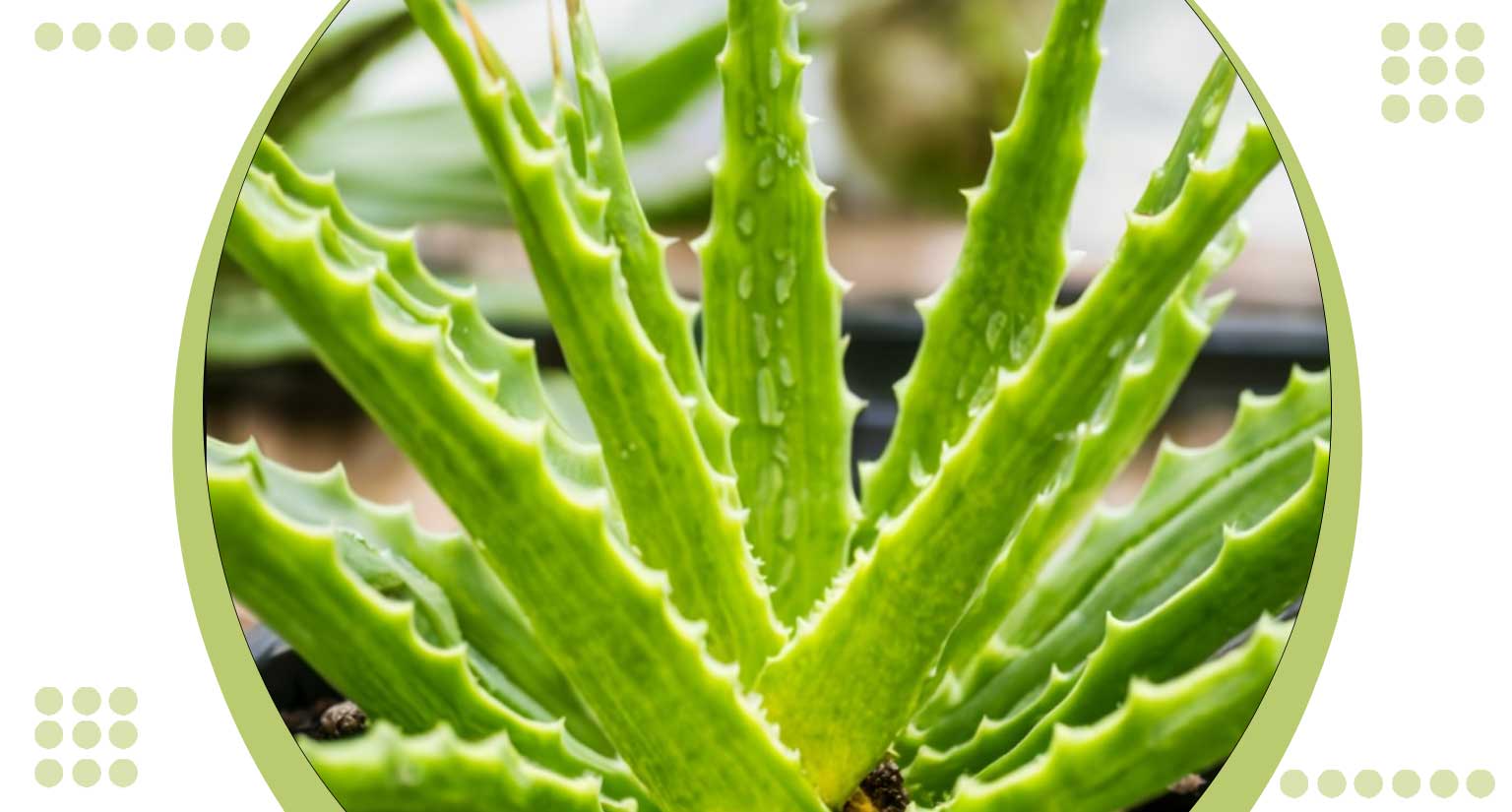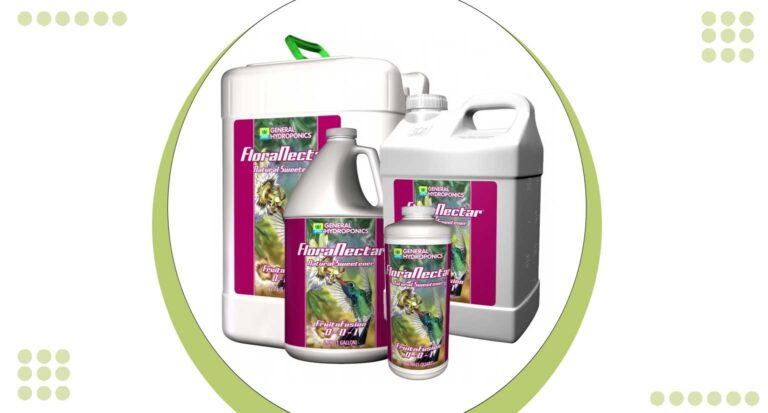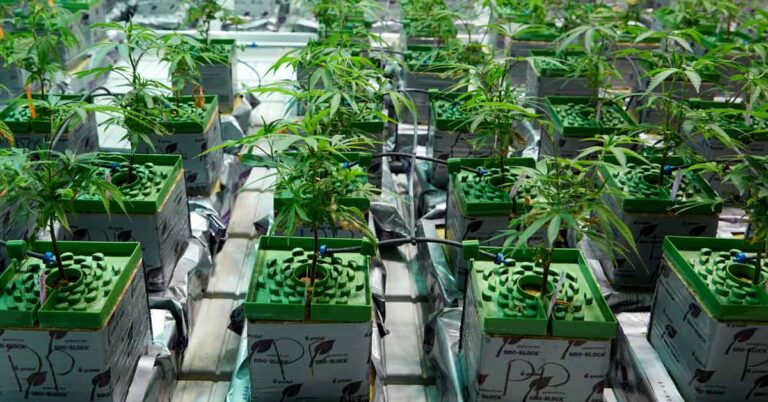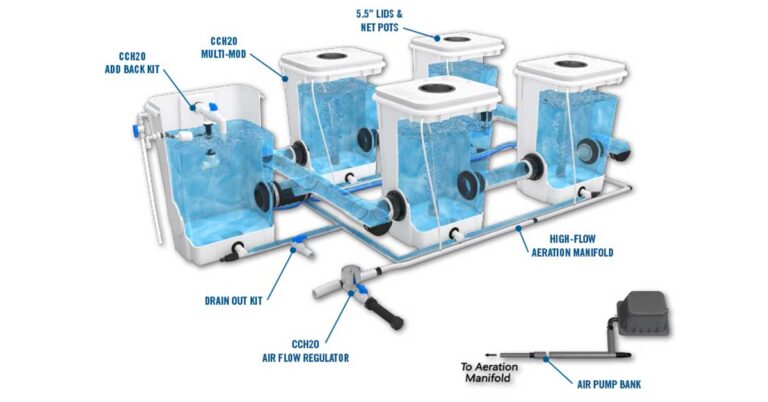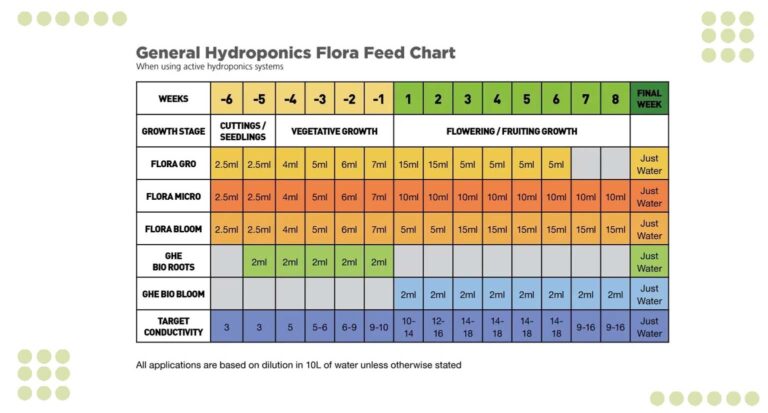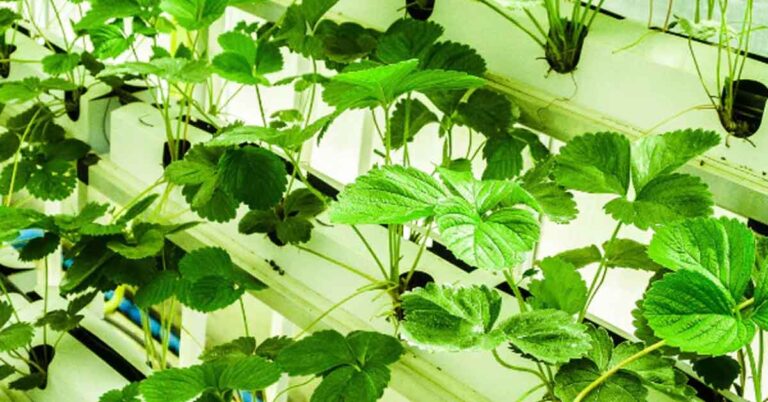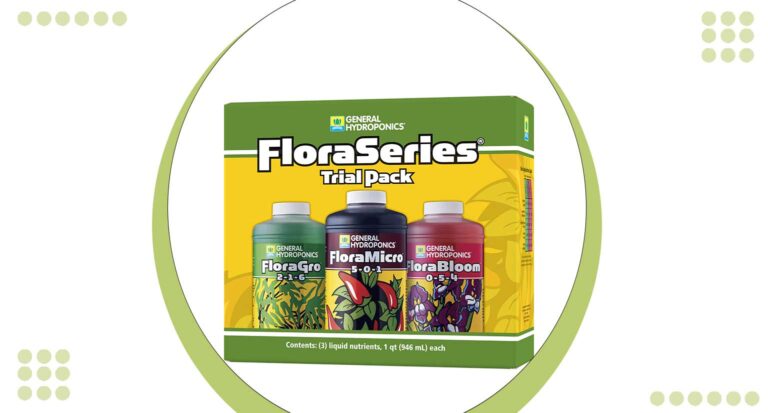Aloe Vera Hydroponics: 5 Essential Tips for Successful Cultivation
Aloe Vera hydroponics represents an innovative method of cultivating this versatile succulent plant without traditional soil. By utilizing nutrient rich water solutions, hydroponic systems provide optimal conditions for aloe Vera to thrive and flourish.
This approach ensures efficient nutrient absorption and growth, resulting in healthier plants known for their medicinal and cosmetic benefits. Aloe Vera grown hydroponically is prized for its purity and potency, meeting high standards of quality and consistency in both commercial and home settings.
The process begins with selecting robust aloe Vera cultivars suited for hydroponic environments. These plants are carefully placed in a controlled setup where their roots are either submerged in or intermittently exposed to a nutrient solution.
This solution is meticulously balanced to provide essential minerals such as nitrogen, phosphorus, potassium and trace elements that promote aloe Vera’s characteristic gel production and medicinal properties. Hydroponic aloe Vera cultivation offers advantages such as faster growth rates, higher yields and minimal environmental impact compared to traditional soil based methods.
Hydroponic systems also allow for precise control over environmental factors like light exposure, temperature and humidity, optimizing conditions for aloe Vera’s optimal growth. This method not only conserves water and reduces the need for chemical fertilizers but also minimizes soil erosion and the risk of pests and diseases.
As interest in sustainable gardening practices grows, hydroponic aloe Vera cultivation stands out as a viable option for individuals and businesses seeking to harness the plant’s therapeutic benefits efficiently and responsibly.
The realm of Aloe Vera Hydroponics, where nature’s healing prowess meets cutting edge cultivation. The secrets of this exceptional plant through a revolutionary hydroponic approach. Your wellness with Aloe Vera grown in a nutrient rich, controlled environment, ensuring unparalleled purity and potency. The synergy of technology and tradition into the benefits, growth process and the remarkable potential that Aloe Vera Hydroponics brings to your life.
How To Grow Aloe Vera Hydroponically?
Growing aloe Vera hydroponically begins with selecting healthy aloe Vera pups or cuttings suitable for hydroponic systems. Plant these pups in a growth medium such as perlite or a specialized hydroponic substrate, ensuring their roots have access to a balanced nutrient solution rich in nitrogen, phosphorus, potassium and essential trace minerals.
Maintain optimal pH levels and nutrient concentrations in the water to promote robust root development and gel production. Ensure the hydroponic setup provides adequate light, ideally with full spectrum grow lights, to mimic natural sunlight and stimulate photosynthesis. Monitor environmental factors like temperature and humidity to create a stable and supportive growth environment for aloe Vera.
Regularly replenish the nutrient solution and prune as needed to encourage healthy growth and prevent overcrowding. By following these steps, growers can successfully cultivate thriving aloe Vera plants hydroponically, harnessing their medicinal and cosmetic benefits efficiently and sustainably.
1. Hydroponic System Setup
Begin your Aloe Vera Hydroponic journey by selecting a suitable hydroponic system. opt for a nutrient film technique (NFT) or deep water culture (DWC) setup to provide the perfect environment for your Aloe Vera to thrive.
2. Quality Nutrient Solution
Ensure optimal nutrition by selecting a high quality hydroponic nutrient solution. Aloe Vera thrives on a balanced mix of essential nutrients, so choose a formula specifically designed for hydroponic cultivation.
3. pH Monitoring and Adjustment
Maintain the pH levels of the nutrient solution between 6.0 and 7.0, as Aloe Vera prefers a slightly acidic to neutral environment. Regularly monitor and adjust the pH to create the ideal conditions for robust growth.
4. Suitable Growing Medium
Select a hydroponic growing medium that promotes aeration and drainage. Coconut coir or perlite are excellent choices, providing stability and support for Aloe Vera roots.
5. Lighting Requirements
Offer abundant light to your Aloe Vera plants. LED grow lights with a spectrum tailored to the different growth stages of Aloe Vera ensure optimal photosynthesis and overall health.
6. Temperature and Humidity Control
Maintain a temperature range of 70-85°F (21-29°C) and humidity levels around 50-60%. These conditions mimic Aloe Vera’s native habitat, fostering vigorous growth and vitality.
7. Regular Monitoring and Maintenance
Keep a close eye on Aloe Vera plants, checking for signs of nutrient deficiencies, pests, or diseases. Regularly flush the system, ensuring a clean and efficient nutrient delivery for thriving Aloe Vera Hydroponics setup.
Follow this comprehensive guide, and soon be rewarded with lush, vibrant Aloe Vera plants cultivated through the innovative and efficient method of hydroponics.
Tips For Maintaining Aloe Vera In Water
Adequate Watering
Strike the right balance by providing sufficient water without overdoing it. Aloe Vera prefers well draining soil, so allow the top inch to dry before watering. Ensure that the pot has drainage holes to prevent waterlogging.
Sunlight Exposure
Place Aloe Vera in a location with bright, indirect sunlight. A sunny window sill or a spot with filtered sunlight works best. Shield the plant from harsh, direct sunlight, especially during the peak hours of the day.
Appropriate Potting Medium
Use a well aerated potting mix specifically formulated for succulents or cacti. Aloe Vera thrives in soil that promotes drainage, preventing the roots from sitting in excess water. A mixture of potting soil and perlite or sand works well.
Temperature Considerations
Maintain a moderate temperature range between 59-77°F (15-25°C). Aloe Vera can tolerate slightly cooler temperatures but should be protected from frost. If placed outdoors, bring the plant inside during chilly nights.
Minimal Fertilization
Aloe Vera doesn’t require frequent fertilization. Feed the plant with a balanced, diluted fertilizer during the growing season (spring and summer) every 3 to 4 weeks. Avoid fertilizing in fall and winter when the plant is dormant.
Prudent Watering during Dormancy
Reduce watering frequency during the winter months when Aloe Vera enters a period of dormancy. Allow the soil to dry out more between watering’s, preventing the risk of root rot during the plant’s rest phase.
Propagation Wisdom
Expand your Aloe Vera family by propagating through offsets (pups). Gently separate the offsets from the main plant and allow them to dry for a day before planting them in their own pots with well draining soil.
5 Essential Tips for Successful Cultivation
1. Selecting the Right Variety
Choose aloe Vera cultivars known for thriving in hydroponic environments. Varieties that adapt well to controlled conditions and have high gel production are ideal for maximizing yield and quality.
2. Optimal Growing Medium
Use a suitable hydroponic growing medium such as perlite or coconut coir to support aloe Vera roots while allowing for efficient nutrient absorption. Ensure the medium promotes good aeration and drainage to prevent waterlogging.
3. Balanced Nutrient Solution
Maintain a well balanced nutrient solution tailored to aloe Vera’s specific needs. Include essential nutrients like nitrogen, phosphorus, potassium and trace minerals to support healthy growth, gel production and overall plant vigor.
4. Adequate Light and Environment
Provide ample light exposure using full spectrum grow lights to simulate natural sunlight and stimulate photosynthesis. Monitor and maintain optimal environmental conditions including temperature, humidity and airflow to promote optimal aloe Vera growth and health.
5. Regular Maintenance and Care
Monitor the health of your aloe Vera plants regularly, adjusting nutrient levels and environmental conditions as needed. Prune dead or damaged leaves to promote new growth and prevent disease. Regularly replace the nutrient solution and clean the hydroponic system to ensure cleanliness and prevent nutrient deficiencies.
By following these tips, growers can cultivate healthy and thriving aloe Vera plants hydroponically, ensuring a consistent supply of high quality gel and maintaining sustainable gardening practices.
Common Challenges in Aloe Vera Hydroponics
1. Root Rot
Symptoms: Browning or blackening of roots, foul odor.
Solution: Ensure proper drainage in the hydroponic system, maintain a balanced pH and avoid overwatering. Consider incorporating beneficial bacteria into the nutrient solution to prevent harmful pathogens.
2. Nutrient Deficiency
Symptoms: Yellowing or discoloration of leaves, stunted growth.
Solution: Regularly monitor nutrient levels and adjust the hydroponic nutrient solution accordingly. Provide a well balanced mix of essential nutrients, including nitrogen, phosphorus and potassium, tailored to Aloe Vera’s needs.
3. pH Imbalance
Symptoms: Leaf discoloration, nutrient lockout.
Solution: Check and maintain the pH of the nutrient solution within the optimal range of 6.0 to 7.0. Use pH testing kits and adjust as needed with pH up or pH down solutions.
4. Inadequate Lighting
Symptoms: Leggy or stretched growth, pale leaves.
Solution: Ensure your Aloe Vera receives sufficient light, preferably through the use of high quality LED grow lights. Adjust the light intensity and duration based on the growth stage of the plants.
5. Pests
Symptoms: Visible pests, distorted or damaged leaves.
Solution: Implement preventive measures, such as regularly inspecting plants for pests. Use natural predators or organic pesticides if necessary. Quarantine new plants before introducing them to the hydroponic system.
6. Temperature Extremes
Symptoms: Wilting, slowed growth.
Solution: Maintain a stable temperature range between 70-85°F (21-29°C). Protect Aloe Vera from extreme temperatures, especially cold drafts or frost. Consider using temperature regulating systems in your hydroponic setup.
7. Overcrowding
Symptoms: Restricted growth, increased competition for nutrients.
Solution: Space Aloe Vera plants appropriately in the hydroponic system to avoid overcrowding. This ensures each plant has access to the necessary nutrients and space for optimal growth.
By proactively addressing these common issues, foster a healthy and thriving Aloe Vera hydroponic system, maximizing the benefits of this innovative cultivation method.
Does Aloe Vera Need Potting Soil?
Aloe Vera’s Preferred Medium
Aloe Vera, known for its hardy nature, has specific preferences when it comes to its growing medium. While it doesn’t strictly need traditional potting soil, it does thrive in a well draining and aerated substrate.
Optimal Growing Medium Options
Succulent or Cactus Mix
A specialized succulent or cactus potting mix is an excellent choice. These mixes typically contain a blend of materials like sand, perlite or pumice, providing the well draining conditions Aloe Vera prefers.
Custom Mix
Create a custom mix by combining regular potting soil with perlite or coarse sand. This DIY approach allows to achieve the desired balance of water retention and drainage for Aloe Vera.
Coconut Coir
Coconut coir, derived from coconut husks, is a sustainable and effective alternative. It offers good aeration and moisture retention, promoting a healthy root system without the risk of waterlogged soil.
Key Considerations
Drainage
Aloe Vera is highly sensitive to waterlogged conditions, so the chosen medium must facilitate efficient drainage. Ensure the selected mix allows excess water to escape, preventing root rot.
Aeration
Aloe Vera roots benefit from well aerated soil. Incorporating materials like perlite or coarse sand helps create air pockets, fostering a healthy root structure and preventing compaction.
pH Level
Aim for a slightly acidic to neutral pH range, around 6.0 to 7.0. This ensures that the nutrients in the growing medium are readily available to the Aloe Vera plant.
Planting Aloe Vera in Containers
If growing Aloe Vera in containers, select pots with drainage holes to further prevent water accumulation. This allows excess water to escape, safeguarding the plant’s root system from potential harm.
Ultimately, providing Aloe Vera with a well draining, aerated growing medium tailored to its preferences is key to fostering a thriving and resilient plant.
Conclusion
The epitome of holistic cultivation through Aloe Vera Hydroponics, where technology meets nature’s healing touch. Well being with nutrient rich, controlled growth, ensuring unparalleled purity and potency. The future of plant care, witnessing the magic of Aloe Vera flourishing in a harmonious hydroponic environment. From root to leaf, this innovative approach has the full potential of Aloe Vera, redefining the standards of wellness. Nurture vitality and purity with Aloe Vera Hydroponics, where health and nature converge.
Aloe Vera hydroponics represents a modern and efficient approach to cultivating this valuable plant known for its medicinal and cosmetic benefits. By harnessing nutrient rich water solutions and precise environmental control, hydroponic systems optimize aloe vera growth, enhancing its gel production and therapeutic properties.
This method not only ensures a consistent supply of high quality aloe vera but also promotes sustainable farming practices by reducing water usage and minimizing environmental impact compared to traditional soil based cultivation.
Moreover, hydroponic aloe vera cultivation offers versatility in agricultural settings, allowing growers to cultivate this resilient plant in diverse environments, from urban spaces to controlled indoor setups. The controlled conditions of hydroponic systems mitigate the risks of pests and diseases, contributing to healthier plants and higher yields.
As consumer demand for natural and sustainable products continues to rise, hydroponic aloe vera stands out as a reliable source of pure and potent gel, meeting stringent quality standards and supporting holistic health and wellness.
Ultimately, adopting aloe vera hydroponics not only benefits growers by enhancing productivity and profitability but also promotes environmental stewardship through efficient resource management. By integrating this innovative cultivation method into agricultural practices, growers can sustainably meet market demands while contributing positively to global conservation efforts and ensuring a greener future for agriculture.

